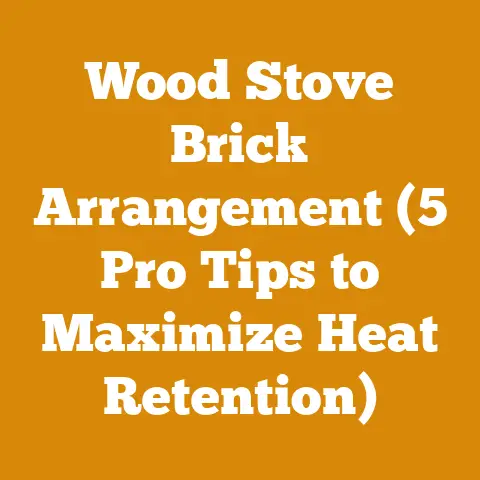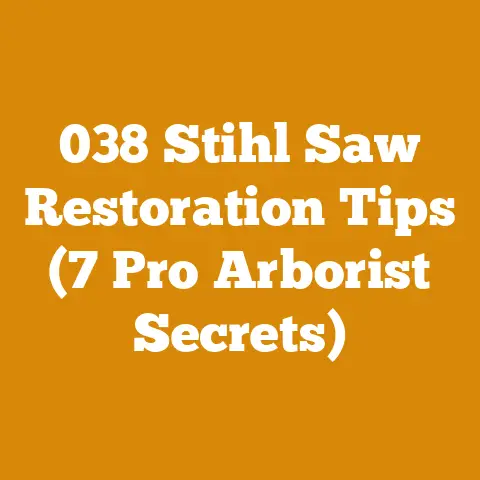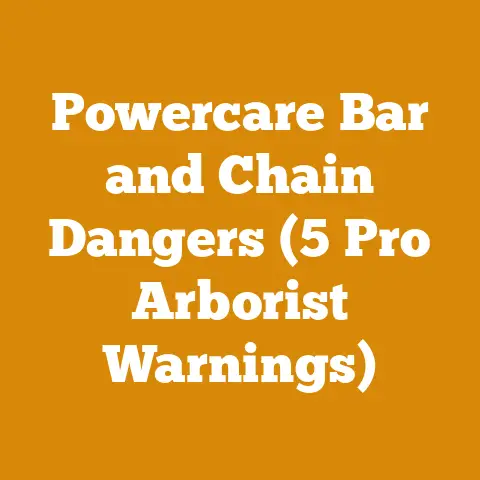Fireplace Rugs Fire Resistant (Best Hearth Protection for Wood Stoves)
Introduction: Hearth Protection on a Budget
The hearth is the heart of the home, especially when winter winds are howling. A roaring fire in the fireplace or wood stove not only warms the house but also creates a cozy ambiance. However, sparks, embers, and hot debris can escape, posing a fire hazard and potentially damaging your flooring. That’s where a fire-resistant fireplace rug comes in. Choosing the right one isn’t just about aesthetics; it’s about safety and protecting your investment. In this article, I’ll walk you through everything you need to know about fireplace rugs, focusing on fire resistance and hearth protection, all while keeping your budget in mind. I’ll share personal experiences, industry data, and actionable tips to help you make the best decision for your home.
Understanding the Need for Fire-Resistant Fireplace Rugs
The primary purpose of a fire-resistant fireplace rug is to protect your flooring from stray sparks, embers, and hot ash that can escape from your fireplace or wood stove. These rugs act as a barrier, preventing these hazards from igniting carpets, hardwood floors, or other flammable materials.
The Risks of Not Having Adequate Hearth Protection
Without proper hearth protection, you risk:
- Fire Hazards: Escaping embers can ignite carpets, rugs, or nearby furniture, leading to a house fire.
- Floor Damage: Even small sparks can scorch or melt synthetic carpets, requiring costly repairs or replacements. Hardwood floors can also be damaged by heat and embers.
- Increased Insurance Premiums: A fire caused by negligence, such as inadequate hearth protection, can lead to increased insurance premiums.
I remember one instance where a friend of mine, a seasoned woodworker, neglected to use a proper hearth rug. A stray ember landed on his carpet, causing a small but noticeable burn mark. While the damage was minimal, it served as a stark reminder of the importance of fire safety.
What Makes a Rug Fire-Resistant?
Fire-resistant rugs are made from materials that resist ignition and the spread of flames. The key is the fiber content and the rug’s construction. Here’s what to look for:
- Material: Look for rugs made from wool, fiberglass, or synthetic fibers treated with fire-retardant chemicals.
- Construction: Dense weaves and tightly packed fibers provide better protection against embers.
- Testing and Certification: Look for rugs that have been tested and certified to meet fire safety standards, such as those set by the Consumer Product Safety Commission (CPSC).
Key Materials for Fire-Resistant Fireplace Rugs: A Cost and Benefit Analysis
The material of your fireplace rug significantly impacts its fire resistance, durability, and cost. Let’s break down the most common options:
Wool Rugs: The Natural Choice
Pros:
- Natural Fire Resistance: Wool is naturally fire-resistant due to its high moisture content and protein structure. It chars rather than ignites easily.
- Durability: Wool rugs are known for their longevity and ability to withstand heavy foot traffic.
- Aesthetics: Wool rugs offer a classic, elegant look and are available in various styles and colors.
Cons:
- Cost: Wool rugs are generally more expensive than synthetic alternatives.
- Maintenance: Wool rugs require regular cleaning and care to prevent moth infestations and maintain their appearance.
- Allergies: Some people are allergic to wool.
Cost: Expect to pay anywhere from $100 to $500 or more for a good-quality wool fireplace rug, depending on size and construction.
Data Point: According to a study by the Woolmark Company, wool has a higher ignition point than many synthetic fibers and self-extinguishes when the source of the flame is removed.
Fiberglass Rugs: The Ultimate in Fire Protection
Pros:
- Exceptional Fire Resistance: Fiberglass rugs are virtually non-combustible and offer the highest level of protection against sparks and embers.
- Affordability: Fiberglass rugs are typically less expensive than wool rugs.
- Low Maintenance: Fiberglass rugs are easy to clean and resistant to stains and mildew.
Cons:
- Aesthetics: Fiberglass rugs often have a utilitarian appearance and may not be as visually appealing as other options.
- Comfort: Fiberglass rugs can be uncomfortable to walk on.
- Potential Irritation: Some people may experience skin irritation from fiberglass fibers.
Cost: Fiberglass fireplace rugs can range from $50 to $200, depending on size and thickness.
Data Point: Fiberglass is commonly used in insulation and fire-resistant clothing due to its exceptional thermal properties and resistance to burning.
Synthetic Rugs: Balancing Cost and Protection
Pros:
- Affordability: Synthetic rugs, such as those made from polypropylene or nylon, are generally the most budget-friendly option.
- Variety: Synthetic rugs are available in a wide range of styles, colors, and patterns.
- Durability: Some synthetic rugs are treated with fire-retardant chemicals to improve their fire resistance.
Cons:
- Lower Fire Resistance: Synthetic rugs are generally less fire-resistant than wool or fiberglass rugs, even with fire-retardant treatments.
- Melting Point: Synthetic fibers can melt when exposed to high heat, releasing toxic fumes.
- Environmental Impact: The production of synthetic fibers can have a negative impact on the environment.
Cost: Synthetic fireplace rugs can range from $30 to $150, depending on the material, size, and quality.
Data Point: A study by the National Fire Protection Association (NFPA) found that synthetic carpets are more likely to contribute to the spread of fire than natural fiber carpets.
A Comparative Cost Table
To help you visualize the cost differences, here’s a table comparing the approximate prices of different types of fire-resistant fireplace rugs:
| Material | Price Range (USD) | Fire Resistance | Durability | Aesthetics |
|---|---|---|---|---|
| Wool | $100 – $500+ | High | High | High |
| Fiberglass | $50 – $200 | Very High | Moderate | Low |
| Synthetic | $30 – $150 | Low to Moderate | Moderate | Moderate |
Sizing and Placement: Maximizing Protection and Aesthetics
Choosing the right size and placement for your fireplace rug is crucial for both safety and aesthetics.
Determining the Right Size
The size of your fireplace rug should be determined by the size of your fireplace or wood stove and the surrounding area. A general rule of thumb is to have the rug extend at least 16 inches in front of the fireplace opening and 8 inches on either side. For wood stoves, the rug should extend at least 18 inches from the front and 6 inches from the sides.
Calculation:
- Fireplace Opening Width: Measure the width of your fireplace opening. Add 16 inches to each side for adequate coverage.
- Fireplace Opening Depth: Measure the depth of your fireplace opening. Add 16 inches to the front for sufficient protection.
Example: If your fireplace opening is 36 inches wide and 24 inches deep, your rug should be at least 68 inches wide (36 + 16 + 16) and 40 inches deep (24 + 16).
Optimal Placement for Safety
Proper placement of your fireplace rug is essential to maximize its protective capabilities. Ensure that the rug covers the entire area where sparks and embers are likely to fall. Avoid placing the rug too close to the fireplace opening, as direct exposure to flames can damage the rug.
Tip: Use painter’s tape to mark the area you want the rug to cover before making your purchase. This will help you visualize the size and placement of the rug.
Balancing Functionality and Design
While safety is paramount, you also want your fireplace rug to complement your home décor. Choose a rug that matches your style and color scheme. Consider the shape and pattern of the rug to enhance the overall aesthetic of your living room.
I’ve seen some beautifully decorated homes where the fireplace rug seamlessly integrates with the room’s design, adding both protection and style.
Understanding Fire Safety Standards and Certifications
When shopping for a fire-resistant fireplace rug, it’s essential to look for rugs that meet established fire safety standards and certifications. These certifications indicate that the rug has been tested and proven to resist ignition and the spread of flames.
Common Fire Safety Standards
- Consumer Product Safety Commission (CPSC): The CPSC sets safety standards for various consumer products, including fireplace rugs. Look for rugs that comply with CPSC standards.
- American Society for Testing and Materials (ASTM): ASTM develops standards for testing and evaluating the fire resistance of materials. Look for rugs that have been tested according to ASTM standards.
- National Fire Protection Association (NFPA): The NFPA develops codes and standards for fire safety, including those related to hearth protection.
Importance of Certifications
Certifications provide assurance that the rug has been rigorously tested and meets specific performance criteria. They also offer peace of mind, knowing that you’re investing in a product that has been proven to provide adequate fire protection.
Tip: Check the rug’s label or product description for information on fire safety standards and certifications. If you’re unsure, ask the retailer for more information.
Maintenance and Care: Extending the Life of Your Fireplace Rug
Proper maintenance and care are essential to prolong the life of your fire-resistant fireplace rug and ensure its continued effectiveness.
Regular Cleaning
- Vacuuming: Vacuum your fireplace rug regularly to remove dust, dirt, and debris. Use a vacuum cleaner with a brush attachment to avoid damaging the rug’s fibers.
- Spot Cleaning: Clean up spills and stains immediately to prevent them from setting. Use a mild detergent and a damp cloth to blot the affected area. Avoid rubbing, as this can spread the stain.
Preventing Damage
- Avoid Direct Flame Exposure: Keep the rug away from direct flame exposure to prevent damage to the fibers.
- Use a Fireplace Screen: A fireplace screen can help prevent sparks and embers from escaping, reducing the risk of damage to your rug.
- Rotate the Rug: Rotate the rug periodically to distribute wear evenly and prevent fading.
Professional Cleaning
Consider having your fireplace rug professionally cleaned every year or two to remove accumulated dirt and stains. Professional cleaners have the expertise and equipment to clean your rug safely and effectively.
I’ve learned from experience that regular maintenance not only keeps the rug looking its best but also helps maintain its fire-resistant properties.
Budgeting for a Fire-Resistant Fireplace Rug: Cost-Saving Tips
Investing in a fire-resistant fireplace rug is an investment in your home’s safety. However, it’s important to stay within your budget. Here are some cost-saving tips:
Shop Around
Compare prices from different retailers to find the best deal. Look for sales, discounts, and coupons to save money.
Consider a Smaller Size
If you’re on a tight budget, consider purchasing a smaller rug that provides adequate coverage for the most vulnerable areas.
Look for Used Options
Check online marketplaces and consignment shops for used fire-resistant fireplace rugs. You may be able to find a high-quality rug at a fraction of the price.
DIY Fire-Resistant Treatment
You can treat a regular rug with a fire-retardant spray to improve its fire resistance. However, be sure to follow the manufacturer’s instructions carefully and reapply the treatment regularly.
Disclaimer: DIY fire-retardant treatments may not provide the same level of protection as a certified fire-resistant rug.
Prioritize Safety
While it’s important to save money, don’t compromise on safety. Choose a rug that provides adequate fire protection, even if it means spending a little more.
Case Studies: Real-Life Examples of Hearth Protection
To illustrate the importance of fire-resistant fireplace rugs, let’s look at a couple of case studies:
Case Study 1: The Near Miss
A family in a rural area had a wood stove as their primary source of heat. They used a regular area rug as a hearth rug, unaware of the fire hazard. One evening, a stray ember landed on the rug, causing it to smolder. Luckily, they noticed the smoke and were able to extinguish the ember before it ignited the rug. They immediately replaced the area rug with a fire-resistant fiberglass rug, preventing a potential disaster.
Case Study 2: The Preventable Fire
A homeowner in a suburban neighborhood had a fireplace but didn’t use a hearth rug. One night, a spark escaped from the fireplace and landed on the carpet, causing a small fire. The fire quickly spread, causing significant damage to the living room. The homeowner’s insurance covered the cost of repairs, but they regretted not investing in a fire-resistant fireplace rug.
These case studies highlight the importance of taking fire safety seriously and investing in adequate hearth protection.
The Environmental Impact of Fireplace Rugs
When choosing a fireplace rug, it’s important to consider the environmental impact of the materials used.
Sustainable Materials
- Wool: Wool is a natural, renewable resource that is biodegradable. However, the production of wool can have environmental impacts, such as land degradation and water pollution. Look for wool rugs that are certified by organizations like the Responsible Wool Standard (RWS).
- Recycled Materials: Some synthetic rugs are made from recycled materials, such as plastic bottles. These rugs can help reduce waste and conserve resources.
Minimizing Environmental Impact
- Choose Durable Rugs: Opt for rugs that are durable and long-lasting to reduce the need for frequent replacements.
- Proper Disposal: When it’s time to replace your fireplace rug, dispose of it properly. Consider donating it to a charity or recycling it if possible.
By making informed choices, you can minimize the environmental impact of your fireplace rug.
Frequently Asked Questions (FAQs)
Here are some frequently asked questions about fire-resistant fireplace rugs:
Q: Are all fireplace rugs fire-resistant?
A: No, not all fireplace rugs are fire-resistant. Look for rugs made from wool, fiberglass, or synthetic fibers treated with fire-retardant chemicals.
Q: How often should I replace my fireplace rug?
A: Replace your fireplace rug when it shows signs of wear and tear or damage. A good-quality rug can last for several years with proper care.
Q: Can I use a regular area rug as a fireplace rug?
A: It’s not recommended to use a regular area rug as a fireplace rug, as it may not provide adequate fire protection.
Q: Are fire-resistant rugs expensive?
A: Fire-resistant rugs can range in price from affordable to expensive, depending on the material and quality.
Q: Where can I buy fire-resistant fireplace rugs?
A: You can buy fire-resistant fireplace rugs at home improvement stores, furniture stores, and online retailers.
Actionable Takeaways and Next Steps
Choosing the right fire-resistant fireplace rug is a crucial step in ensuring the safety of your home. Here are some actionable takeaways and next steps:
- Assess Your Needs: Determine the size and type of rug that best suits your fireplace or wood stove and your home décor.
- Research Materials: Explore the different materials available and their respective pros and cons.
- Check for Certifications: Look for rugs that meet established fire safety standards and certifications.
- Set a Budget: Determine how much you’re willing to spend on a fireplace rug.
- Shop Around: Compare prices from different retailers to find the best deal.
- Maintain Your Rug: Clean and care for your rug regularly to prolong its life and ensure its continued effectiveness.
- Prioritize Safety: Always prioritize safety when choosing a fireplace rug.
By following these steps, you can find the perfect fire-resistant fireplace rug to protect your home and enhance your living space.
Conclusion: A Safe and Stylish Hearth
Investing in a fire-resistant fireplace rug is an investment in peace of mind. By understanding the risks of inadequate hearth protection, choosing the right materials, and following proper maintenance practices, you can create a safe and stylish hearth that will be the heart of your home for years to come. Remember, a little prevention goes a long way in protecting your family and your property. Stay warm, stay safe, and enjoy the cozy ambiance of your fireplace or wood stove.






